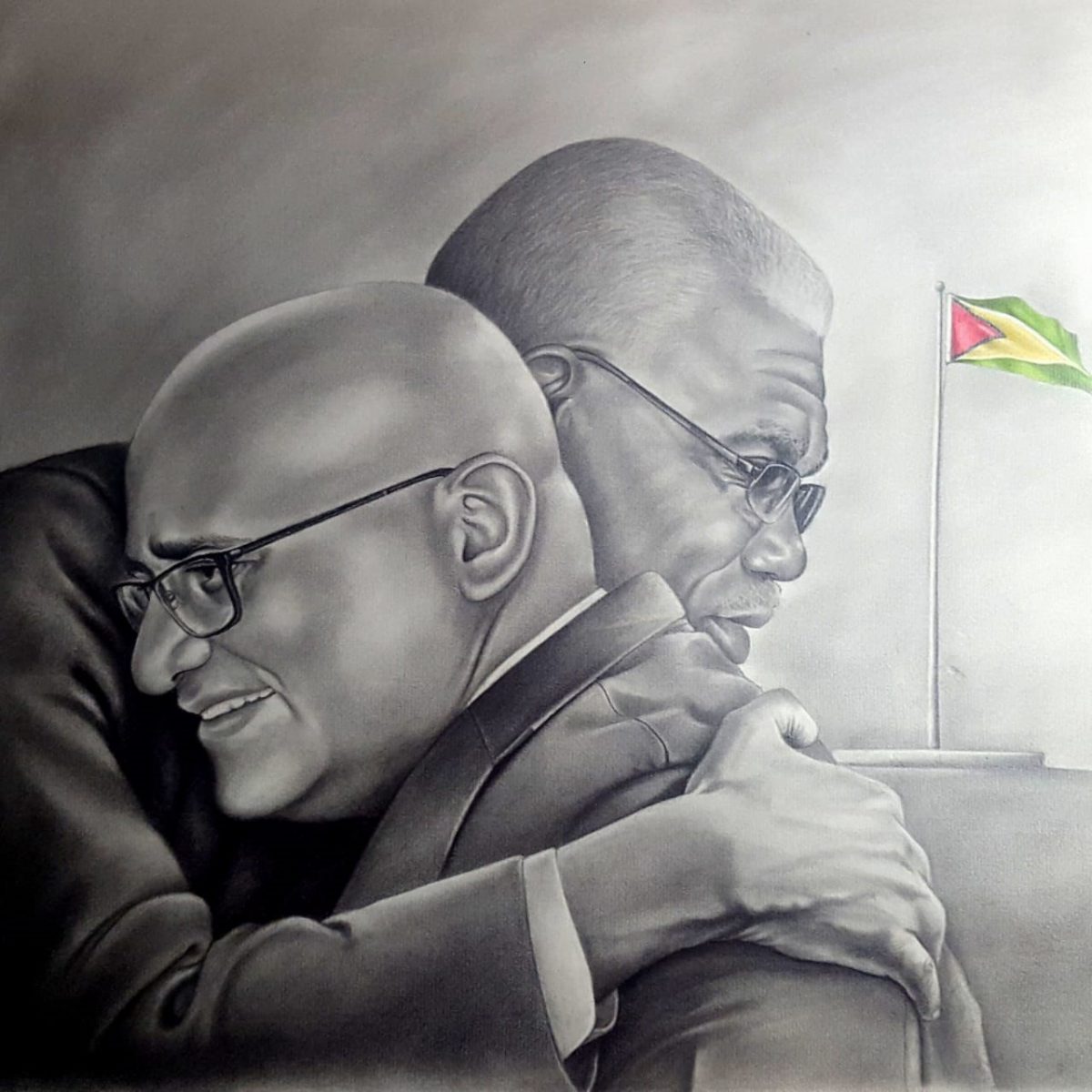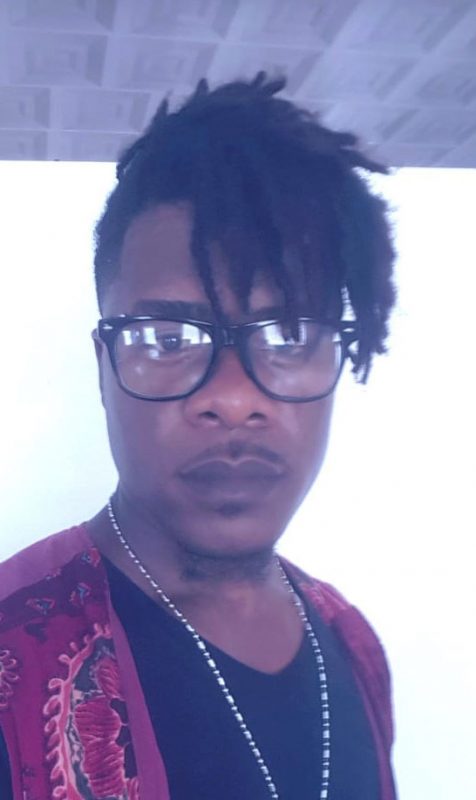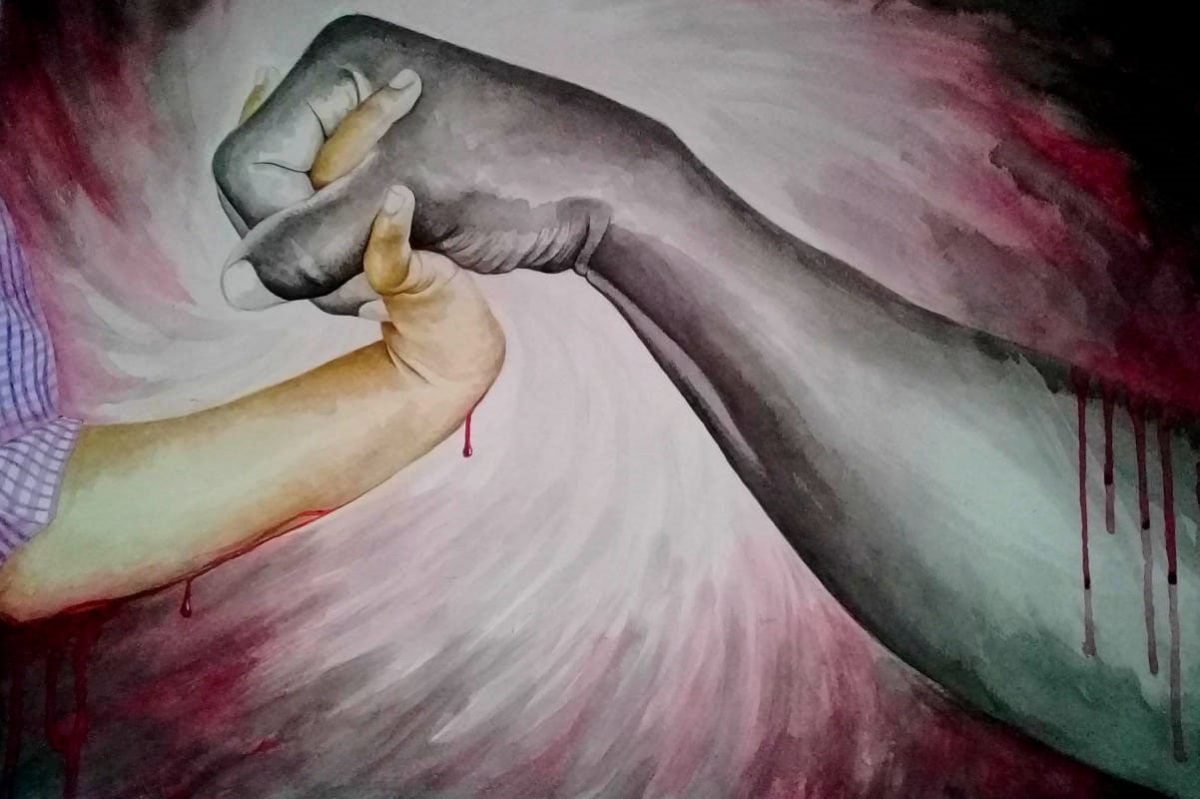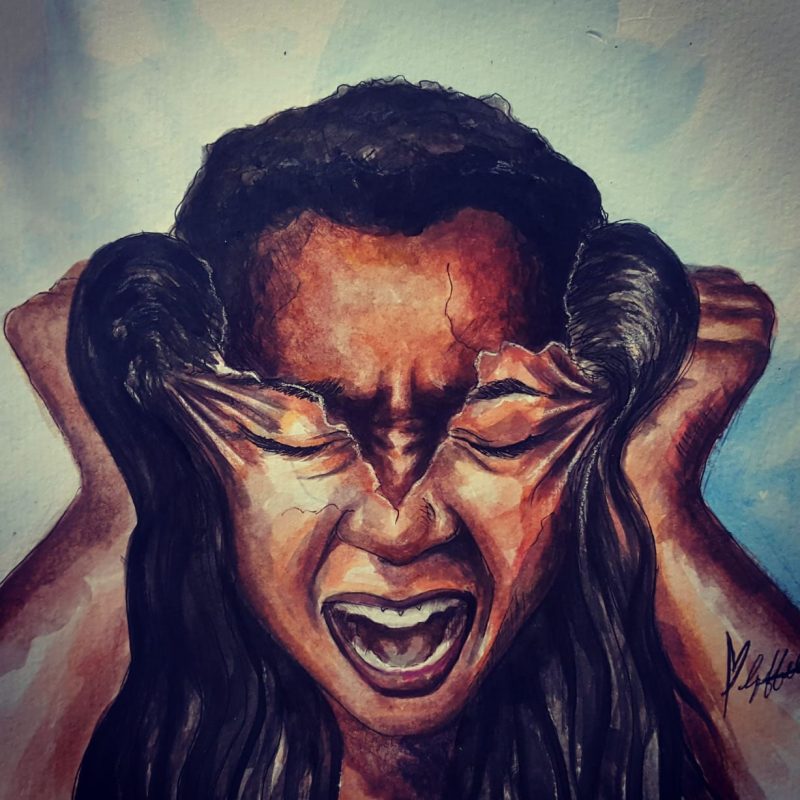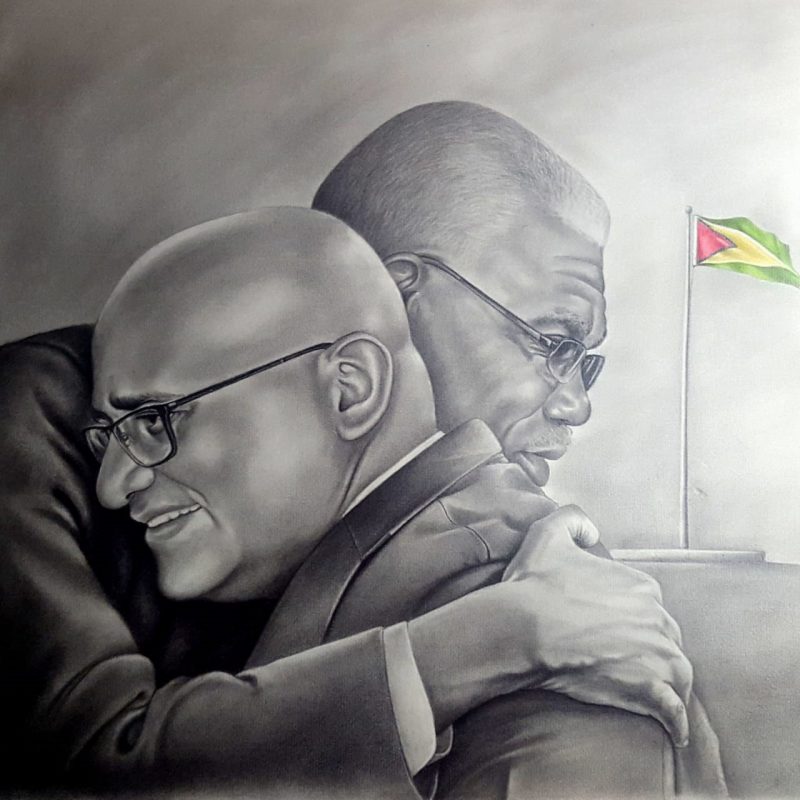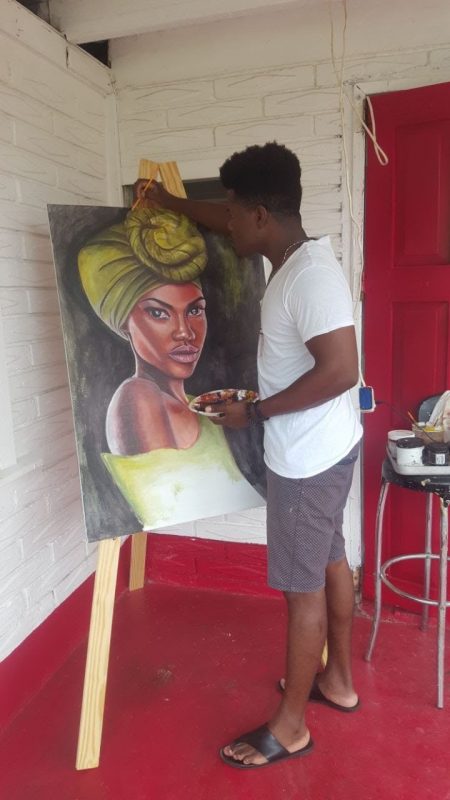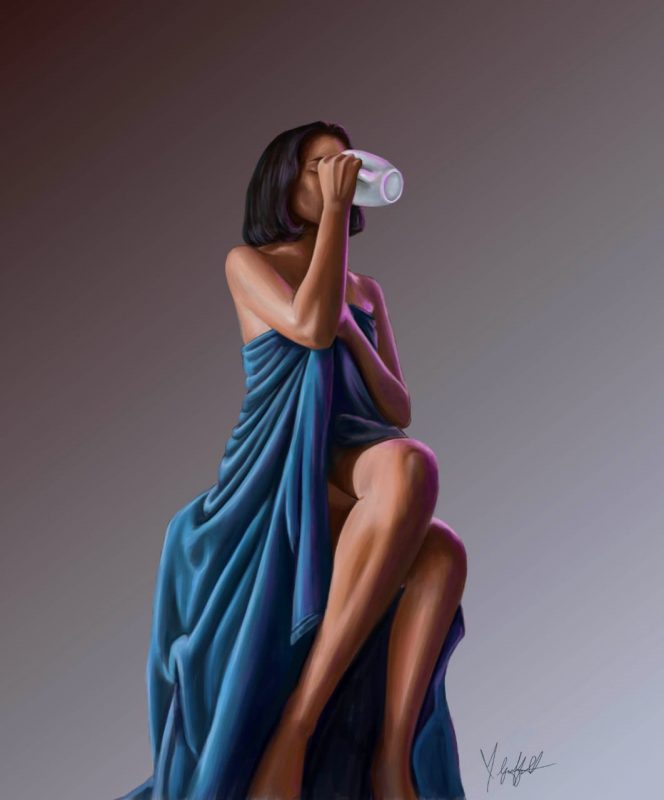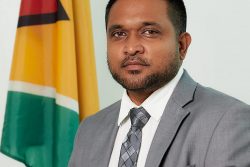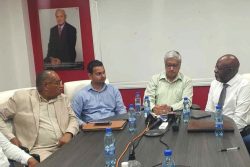Those who have seen Michael Griffith’s paintings are in awe of his work, but Michael himself did not realize his potential while he stood on the sidewalk everyday as a watch repairman some years ago, doodling in his free time. It was passersby captivation by this doodling and later drawings that led him to where he is today.
One of his recent pieces that he posted on Facebook is a digital painting of a woman wrapped in a sheet having her morning coffee. Titled ‘Morning Glory’, it has fascinated many who continue to commend him for his incredible skill. ‘Morning Glory’ is among Michael’s more than 100 most-treasured pieces, although his work in total far surpasses this.
Having only decided to try digital painting in July, though he purchased the device a year prior, Michael has mastered this skill already, though he remains modest about his talent and is quick to say that he has not yet mastered art in general but is still learning. His work, however, tells another story.
Asked whether digital or traditional painting is better, Michael says it varies. While it may be easier to put together a digital painting, persons tend to lean more to traditional painting because they can pick up more on brushstrokes and texture of the work. The downside of traditional art is the storing of the actual pieces, while digital art can be saved on a device.
Another painting that intrigued Michael’s audiences was one done traditionally that portrayed a woman coming to life off a paper while being created by an artist. “I wanted to toy with the concept of a creator creating but encompassing it into one piece so for me it was more of depicting the interaction between the artist and the art, while trying to capture it from a third person’s perspective,” he explained. The piece, titled ‘Animated’, was created through with the use of pencil, crayons, charcoal and watercolour.
Michael’s fascination with art began somewhere between the ages of seven to nine, he said. Sometime during this phase of his life, a cousin of his was visiting from Trinidad. “At the time his artwork, which I later realized were doodles, fascinated me. So, that was the genesis of my interest in art. He had drawn some sight profiles of people. They weren’t that good, but I became fascinated and I never let that go since.”
Though his obsession grew, Art was never offered as a subject at his primary or secondary schools and remained a hobby he indulged in. Michael admitted that he spent more time creating the cover pages of his assignments than he was pleased to acknowledge, smiling as he said so.
Choosing the Technical Drawing stream was the closest he came to doing Art at school. Though his drawings surrounded construction, it was good enough for him. Asked whether his skill brought him popularity, Michael said that in fact he always considered himself one of the less popular students, until at a school concert when it was asked who the most popular boy was, and his peers chanted his name. Unlike the popular boys who gave teachers trouble, Michael was disciplined.
He was not athletic either. His first school sports was not a nice experience and that was the last time he was involved in track and field. “At nursery school, I was told by the teacher just before a relay race to not run until I received the baton from my partner,” he explained. “The child who was supposed to hand me the baton, dropped the baton and came running without it. My competitors ran off and I just stood there. My teacher was like ‘what happen? Run, run!’ and I was like ‘Me ain’t got nothing’ and she said ‘Run!’ so I just walk to the finish line, and that was it for me in sports.”
In the beginning of his adult life, Michael settled into selling and repairing watches on Water Street and he would doodle in his book whenever he had the free time. People passing would exclaim that his work was impressive and before long people began turning up, not to repair watches, but to have him draw pictures of them or someone special to them. The more he drew, the more he realized that he could make a living doing something he loved. Michael then decided that he needed to take an art course which led to him attending the E R Burrowes School of Art then later the University of Guyana.
“Art to me is like mediation. It gives you that momentarily escape where you can just get lost in it or [set aside] the monotony of whatever it is that is happening in your life,” he said.
Michael is inspired by Winslow Craig. “I admire his sheer dedication to the craft as well as his character in terms of his personality and him just being a grounded individual,” he noted. But his life inspiration, he revealed, was Nelson Mandela. It was during his own journey of trying to find himself and his purpose that he realized that some persons are more vulnerable to anger and pain. Knowing that Mandela chose to rise above such times in his life and preach love and compassion, he said, was to him one of the most profound things someone could do after being dealt with the way he was. “If there ever was one person I could meet, it would have been the late Nelson Mandela [to] ask him how did he not let pain and anger consume him,” he said.
Not one to label the kind of artist he is, Michael has done a bit of everything, portraits, realism, sculpting, installation, digital, traditional, and drawings.
He has had several exhibitions including three independent ones: ‘Artholics Anonymous’, ‘Reconciling Art’ and one that was unnamed.
The most challenging work he has done to date is an installation piece for an exhibition at the National Art Gallery, Castellani House because of the time and effort it took. This particular piece consisted of dozens of balls suspended in the air. What made it really difficult to do were the calculations and the precision needed to construct it, but the artist strongly believes he is yet to meet his most difficult project.
Michael’s work has been to different parts of Guyana and the US and he is currently working with an American writer as an illustrator. He has also done work for Jamaican artiste Chronixx.
Asked whether it is difficult for him to get supplies, the artist said that while he has heard artists complain about this in the past, he tends to order supplies a year ahead and currently has enough for another year. Getting the correct materials can be expensive though, which may be his reason for buying in bulk.
Given the number of years since art became his career, Michael has learnt some lessons as regards the do’s and don’ts and has had experiences that made him rethink the way he does business. “When I was just beginning in the art profession there was this man who contacted me for a portrait,” he said. “At that time, I never collected advance so I would just tell them to send me the photo and I’ll do the drawing and come and deliver it. Since the person needed it within a timeframe, I was working day and night to get it done. It so happened that the person asked for me to take a photo of the painting and send it to them which I did. … The person never collected the piece nor paid for it, but they did update their WhatsApp and Facebook status and everything. That taught me a few lessons. First of all, to collect my advance and secondly, to never send a whole photo or a proper photo of the finished product. Since then I’ve almost found myself in similar positions with friends and because I know them or am busy at the moment, I won’t ask for advance.
“About six or seven months ago I did a logo for someone I studied at UG with who was starting a business. I told him I collect advances but after he explained that things were bad, I went ahead and did it for him. Up to now I’m still waiting to be paid for it and he’s flossing his business with the logo.”
Michael hopes that in the years to come he is allowed to be able to create unorthodox work that isn’t criticized for being different. He has his own gallery ‘Oxygen Arts’.
“Future-wise I’d love to see art and artists be recognized as a reflection of society or timekeepers of society, same with poets, artistes and visual artists,” he said. “Artists can survive solely on art but the level at which the artist will be living is nowhere close to the life he might want. Art can also boost tourism in Guyana but would imply that there is more attention given to artists. There is a lot of culture and Guyanese flavour that can be found in art if you search. If it’s never given a chance to be properly displayed or exhibited as it should be… tourists see only one side of Guyana and a lot of times art tends to seduce foreigners.”
In his free time, Michael learns new software, takes care of his three children and watches documentaries.
Follow Michael on Instagram @oxygen_arts_griffith, on Facebook at Oxygen Art or on WhatsApp at 691-5356.
